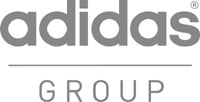 For the second time in two months, Adidas Group lowered its top-line guidance for the year. The revised outlook was blamed on a further weakening of several currencies, a distribution problem in Russia and ongoing softness in golf. The earnings update came following Adidas' executive board meeting.
For the second time in two months, Adidas Group lowered its top-line guidance for the year. The revised outlook was blamed on a further weakening of several currencies, a distribution problem in Russia and ongoing softness in golf. The earnings update came following Adidas' executive board meeting.
Adidas estimated that a further weakening of several currencies versus the euro throughout August and September mentioning the Russian ruble, Japanese yen, Brazilian real, Argentine peso, Turkish lira and Australian dollar – led to a high-single-digit percentage point negative FX rate impact in Q3.
An unexpected short-term distribution constraint as a result of the transition to the Adidas Group’s new warehouse in Chekhov, close to Moscow, is impacting the quantity of new product flow to stores. While expected to be resolved at the beginning of the fourth quarter, the problem, together with the weakness of the Russian ruble, has made the Group’s 2013 goals for Russia/CIS no longer attainable.
Finally, continued softness in the global golf market and TaylorMade-Adidas Golf’s focus on maintaining healthy inventory levels in the marketplace will lead to a lower sales and profit contribution from the golf segment than originally forecasted. On its second-quarter conference call, Adidas officials noted that the golf market got off to a late start to the season in many markets due to inclement weather with the amount of rounds played globally dropping at a double-digit rate on average. The company has said it owns about 40 percent of the global market for golf.
“Despite the increased headwinds we are facing in the short term, we remain confident and resolute in pursuit of our Route 2015 strategic aspirations,” said Herbert Hainer, Adidas Group CEO, in a statement. “Based on the strong demand for our highlight concepts and innovations in our key categories, the upcoming initiatives for the FIFA World Cup 2014 and positive customer feedback to our spring/summer 2014 collections both at Adidas and Reebok, momentum will clearly return to our business in the fourth quarter and beyond.”
The company’s plan sees revenue reaching €17 billion by 2015 from €14.9 billion last year.
Adidas Group now expects a low-single-digit currency-neutral sales increase for 2013, down from its previous forecast for a low- to mid-single-digit increase. Net income attributable to shareholders is now projected to increase at a mid-single-digit rate to a level of €820 million to €850 million, down from a previous range of €890 million to €920 million. A significant portion of the negative impact will be in the third quarter with a “strong rebound in sales and profitability growth” still expected for the fourth quarter.
On Aug. 8 in reporting second-quarter results, Adidas slightly trimmed its 2013 revenue forecast because of “lackluster” sales in Europe and a wide range of deteriorating currencies against the Euro. Prior to that date, the company had predicted sales growth in the medium single-digit rate. However, at the time it stuck to its profit targets and EPS guidance for the year, slightly raising its gross margin projections.
Adidas also appointed Roland Auschel, currently chief sales officer multichannel markets, to its executive board, assuming responsibility for global sales on a board level. Michael Stanier, chief sales officer consumer direct, and Harm Ohlmeyer, chief e-commerce officer, will report into Auschel.
In addition to his role as CEO, Herbert Hainer will remain directly responsible for the Group's largest market, North America. The Adidas AG executive board will expand from four to five members. Beyond Hainer and Auschel, the board includes Glenn Bennett, global operations; Robin Stalker, CFO, and Erich Stamminger, global brands.















